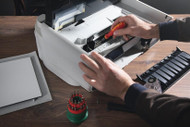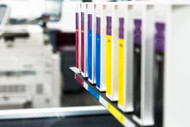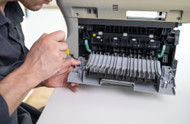Understanding Printer Technologies: Inkjet vs Laser
When it comes to printer technologies, inkjet and laser are the two heavyweights in the ring. Each has its own set of strengths and weaknesses, making the choice between them a crucial decision for anyone in need of a printer. Whether you're a casual user at home or a business professional in need of high-quality prints, understanding the differences between these two technologies is essential.
Inkjet printers have long been a staple in homes and offices around the world. These printers use ink cartridges filled with liquid ink, which is sprayed onto the paper in tiny droplets to create text and images. Inkjet technology is renowned for its ability to produce vibrant colors and sharp details, making it an ideal choice for printing photographs and graphics.
On the other hand, laser printers operate using a different approach. Instead of liquid ink, they use toner cartridges filled with a fine powder. This powder is fused onto the paper using heat and pressure, resulting in fast and precise prints. Laser printers are known for their speed and efficiency, making them a popular choice for busy offices and businesses with high-volume printing needs.
So, which printer technology is right for you? Let's delve deeper into the differences between inkjet and laser printers to help you make an informed decision.
Print Quality:
When it comes to print quality, inkjet printers have the upper hand. The liquid ink used in inkjet printers can produce stunning, photo-quality prints with rich colors and fine details. This makes inkjet printers an excellent choice for printing photographs, marketing materials, and other graphics-heavy documents.
Laser printers, on the other hand, excel in producing crisp, sharp text. The precision of laser technology ensures that text is consistently legible, even at smaller font sizes. While laser printers may not offer the same level of color vibrancy as inkjet printers, they are still capable of producing high-quality graphics and images, making them a versatile option for many users.
Speed and Efficiency:
When it comes to speed and efficiency, laser printers are the clear winners. Laser technology allows for faster printing speeds compared to inkjet printers, making them ideal for environments where time is of the essence. Additionally, laser printers are designed for high-volume printing, with toner cartridges that can produce thousands of pages before needing to be replaced.
Inkjet printers, while capable of producing high-quality prints, tend to be slower than their laser counterparts. This is especially true when printing in color, as inkjet printers may need to make multiple passes over the same area to achieve the desired color intensity. While inkjet printers may be sufficient for occasional home use or small offices, they may not be suitable for environments with heavy printing demands.
Cost Considerations:
When it comes to cost, both inkjet and laser printers have their pros and cons. Inkjet printers tend to have a lower upfront cost compared to laser printers, making them an attractive option for budget-conscious consumers. However, ink cartridges can be expensive to replace, especially if you print frequently or in high volumes.
Laser printers, on the other hand, have a higher initial cost but offer a lower cost per page in the long run. Toner cartridges generally have a higher page yield compared to ink cartridges, meaning you'll spend less money on replacement cartridges over time. This makes laser printers a more cost-effective option for users with high-volume printing needs.
Environmental Impact:
Finally, it's essential to consider the environmental impact of your printer choice. Inkjet printers typically use less energy than laser printers, making them a more eco-friendly option for environmentally conscious consumers. Additionally, ink cartridges are easier to recycle than toner cartridges, further reducing their environmental footprint.
However, laser printers have their own environmental benefits. Toner cartridges tend to last longer than ink cartridges, meaning they need to be replaced less frequently. Additionally, laser printers produce less waste during the printing process, as there are no liquid inks to dispose of.
Conclusion:-
The choice between inkjet and laser printers ultimately depends on your specific needs and priorities. If you value print quality and vibrant colors, an inkjet printer may be the best option for you. However, if speed, efficiency, and cost-effectiveness are your top priorities, a laser printer may be the way to go. Whichever technology you choose, rest assured that both inkjet and laser printers have their own unique advantages to offer.
"Choosing between an inkjet and laser printer is like choosing between a paintbrush and a roller. Both have their own strengths and are suited to different tasks. It's all about finding the right tool for the job." -
By understanding the differences between these two printer technologies, you can make an informed decision that meets your printing needs while staying within your budget and environmental considerations. Whether you opt for the vibrant colors of an inkjet or the efficiency of a laser, rest assured that both technologies have come a long way in delivering high-quality prints for homes and businesses alike.





